2017 Chevrolet Bolt Review

Don’t let the popularity of the Tesla Model S fool you: Electric vehicles aren’t selling as well as perhaps they should be.
In fact, less than one percent of the nearly 20 million or so cars, trucks and sport utilities sold in North America last year were electric. It’s not all bad news on the EV front, though, and optimists will be quick to note the progress they have made in their short history on the market. After all, sales of battery electric vehicles have continued to climb steadily, surpassing 160,000 units between the United States and Canada in 2016, or almost the same number of vehicles Honda sold in Canada last year. Regardless, proponents of electric propulsion are still waiting for EVs to carve out a more significant share of the market. And perhaps the biggest obstacle in the way is price.
Get past range anxiety and long charging times, and the astronomical upfront cost of EV ownership is no doubt keeping plenty of potential buyers away. Yet in an ironic twist — and one that’s akin to the issue of the chicken or the egg — those prices are likely to remain high until more buyers opt for EVs. Automakers know this all too well, and a handful are working on electrified solutions that fit the needs — and budgets — of the masses. And the first of this new class of relatively affordable, everyday-friendly EVs to hit the market is the 2017 Chevrolet Bolt.
All The Way Electric
But what does this new electric hatchback bring to the table that the existing Chevrolet Volt doesn’t? Aside from its confounding name — conversations about the car invariably include descriptors like “that’s Bolt with a ‘B’” for clarity’s sake — the Bolt joins the alternative fuel fray with little doubt about its electric origins. Because unlike the Volt, which features a gas engine (it doesn’t send power to the wheels directly but essentially generates more electricity on the fly), the Bolt is powered by pure electrons.
ALSO SEE: 2017 Toyota Prius Prime Review
Sort through the complex web of wires necessary to make the whole thing work, and the Bolt’s powertrain is fairly straightforward. Propulsion is made possible by an electric motor that draws power from the car’s floor-mounted battery pack, and what’s essentially a fixed ratio transmission that sends it to the front wheels.
The 60-kilowatt-hour battery pack, a lithium-ion unit, spans the entire length of the car’s cabin and can be plugged into Levels I, II or III charging stations. Using the former means long charging times, while the latter, known as DC Fast Charging, can top the battery up with 90 miles (145 kilometers) of range in about 30 minutes, or juice it up completely in about two hours. Topping the battery up completely using a Level II charger, meanwhile, takes a little less than 10 hours and provides an estimated range of 238 miles (383 kilometers).
FAST FACTS
| Motor: | Single motor drive unit |
| Output: | 200 hp, 266 lb-ft |
| Transmission: | Fixed ratio |
| Battery Size: | 60 kWh |
| Estimated Range: | 238 miles; 383 kilometers |
| US Price: | Starts at $37,495 (before available incentives) |
| CAN Price: | Starts at $42,795 (before available incentives) |
What Range Anxiety?
That differs greatly from the Volt, which only ekes out a paltry 53 miles (85 kilometers) of pure electric driving from its much smaller 18.4-kWh battery pack. It also means range anxiety is almost nonexistent in the Bolt in most driving situations.
Departing Menlo Park, Calif., with a fully charged battery — and an indicated 234 miles (377 kilometers) of range — our tester was more than fit for an extended tour of the rain-soaked San Francisco Bay Area. With a roundabout journey spanning about 100 miles (160 kilometers) on the day’s docket, battery life was of little concern.
With the instant torque provided by the electric powertrain, the Bolt offered impressive acceleration — a useful tool not for racing along city streets, but rather when passing and merging. The electrified gusto did, however, combine well with the Bolt’s responsive ride, a product of wheels that sit as near as possible to the corners, and low center of gravity, created by the battery pack, to have a little bit of fun when called upon.
ALSO SEE: Here’s What Will be Powering Next-Generation Electric Cars
The battery pack’s low positioning in the car isn’t always smile-inducing, though. Tipping the scales at 960 lb (435 kg), it creates a weight imbalance in the Bolt that can lead to a seesawing effect over uneven pavement, something that became quickly evident on the Bay Area’s roly-poly highways. It’s definitely not a deal-breaker, but does take some getting used to — particularly for those who are new to electric vehicles.
The Bolt’s regenerative brakes, as well as the transmission’s ‘Low’ mode, also require some acclimation. It didn’t take much time in the car — and particularly the passenger seat — to understand why a pack of motion sickness pills had been tossed in the glove box for our drive. Like the Volt, the Bolt features a steering wheel-mounted paddle that can be used to slow the car while putting power back into the battery, though doing so can be jarring, with the brakes feeling especially grabby and tough to modulate. Likewise, the Low mode on the gear selector, which acts almost as an engine brake, applies an extra dose of regenerative braking when the accelerator isn’t applied. It can also make the road feel like it’s made of magnets, with the car slowing very abruptly.
With a little bit of time behind the wheel, it’s not difficult to adjust to the aggressive nature of the regenerative braking system. It’s also an easy way to maximize — and even extend — the Bolt’s range, allowing for one-pedal driving that almost eliminates the need to touch the brake pedal.
Advanced Interior
Just as transformative as the Bolt’s drive is its advanced interior. An eight-inch digital gauge display is joined by a massive 10.2-inch touchscreen infotainment screen like the one found in the 2017 Toyota Prius Prime plug-in hybrid. Both screens are bright and easy to read, and can be used to monitor the Bolt’s energy flow and efficiency ratings, including an energy usage scoring page. It could perhaps benefit from some additional scoring apps to encourage efficient driving, but those are sure to come thanks to the infotainment system’s smartphone integration.
Like all other new GM vehicles on the market, the Bolt benefits from the inclusion of Apple CarPlay and Android Auto, as well as 4G LTE with Wi-Fi. It doesn’t, however, feature a native navigation system, a decision that was made due to the rapid pace at which software is rendered obsolete.
ALSO SEE: 2017 BMW i3 Officially Gets 114-Mile Range
Elsewhere inside, the Bolt features clean lines and bright materials, matching will with the car’s extensive use of glass to creates a fishbowl-like atmosphere from within. Helping to provide an even more extensive view of what’s going on around the Bolt is its available rear camera mirror like the one introduced on the Cadillac CT6 and the first surround view monitor to appear on a Chevrolet vehicle.
Despite its shapely proportions, the Bolt’s cargo room isn’t quite as generous as it may appear to be. At 16.9 cu-ft (479 liters), it offers more space for stuff than the smaller BMW i3, but a tall load floor created by the battery pack means far less room on offer than the average hatchback. Thankfully the passenger compartment is roomy enough to fit a family of four, with rear seat headroom the only weak link.
Affordable For Some
When it comes to cost, just how frugal the Bolt really is will no doubt be a topic of debate. While Chevrolet is quick to note the Bolt’s price after available government incentives — about $30,000 in the U.S., and $32,000 in the province of Ontario — the numbers can be a bit deceiving. With a base price of $37,495 before incentives ($42,795 in Canada), the Bolt is anything but inexpensive. Pricier still is the leather-lined Premier trim, which has an MSRP of $40,905 ($47,795 in Canada) and doesn’t include active safety features like lane-keep assist and autonomous emergency braking. That means those who don’t qualify for the rebate — or live outside the provinces British Columbia, Ontario or Quebec — are looking at quite the pricey proposition. Sadly, that cost conundrum will only be exacerbated by current gas prices, which are enough to make EVs an even tougher sell.
The Verdict: 2017 Chevrolet Bolt Review
In one fell swoop, Chevrolet is looking to tackle both the cost and range issues associated with electric vehicles. And so far it looks like the Bolt has done an impressive job. Sure, it’s still pricey, particularly for a loaded Premier model, but it does a lot right to warrant all the hype it has earned. And maybe — just maybe — the Bolt has what it takes to keep EVs trending in an upward direction.
LOVE IT
- Silky smooth acceleration
- Relative lack of range anxiety
- Bright and open cabin
LEAVE IT
- Jarring regenerative brakes
- Cost of active safety options

Dan is AutoGuide.com's Road Test Editor, a long-suffering Buffalo Bills fan, and a car guy since childhood. He enjoys long walks on the beach and long drives just about anywhere the road, track or trail will take him. You'll see him driving around evaluating cars and in front of a camera talking about them. Dan is a member of the World Car of the Year jury.
More by Dan Ilika



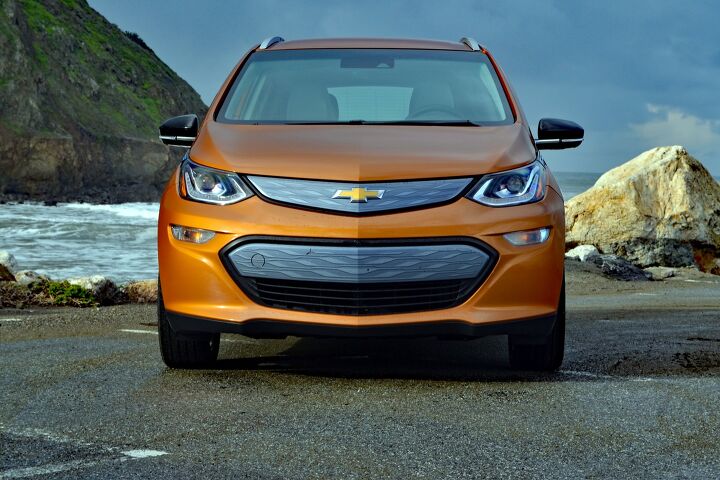








































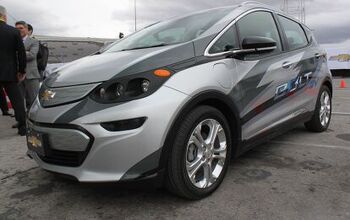
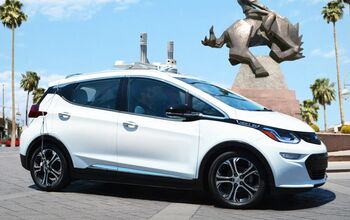
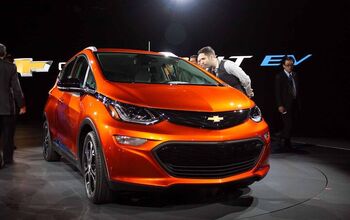


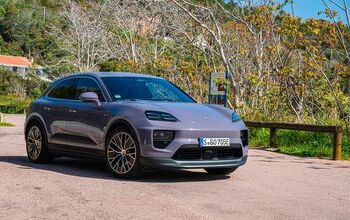

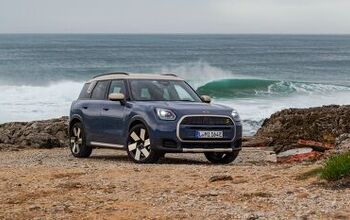
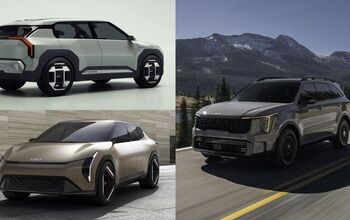


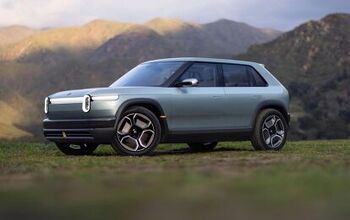


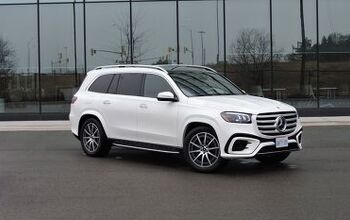
Comments
Join the conversation
A correction: the load floor height is not because of the battery pack. It's a removable floor to provide a flat cargo area when you put the rear seats down. Remove the false floor and the cargo area is quite deep. The removable floor is standard only in the Premiere, it's an (inexpensive) option in the LT. Like DC fast charging, it is a feature that should just be standard across the board.
I want to pick on the names Chevy has decided to call their cars, the Volt and Bolt. I don't know which is which, I know one is pure electric I think, but that was a bad marketing move to have the names sound the same and evoke similar imagery. In this seemingly minor naming faux pas, they've already lost me from even bothering to look into this further to attempt to understand what they're trying to sell because it seems like such a noob mistake, which is why I'm just going to wait for the Model 3. At least with that car, I know exactly what I'm getting, and by the sounds of it, it's costs less too.